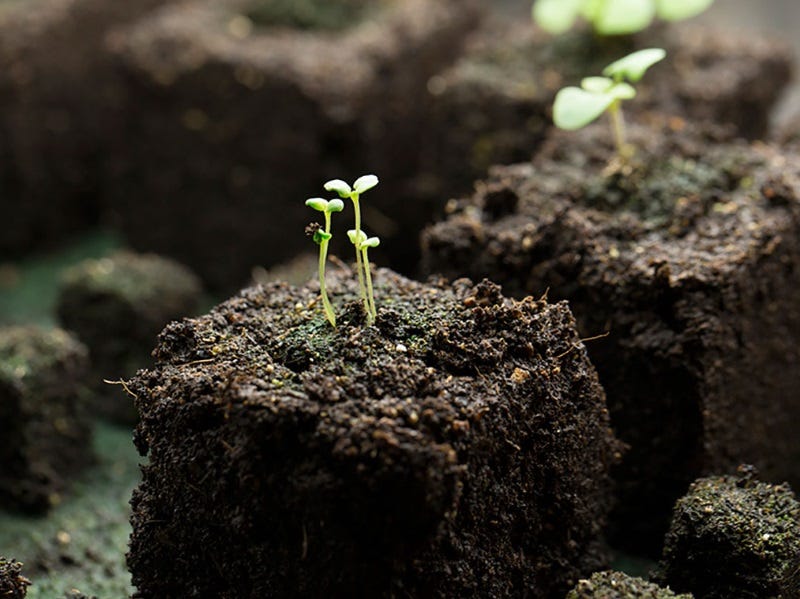The Secret in the Soil: Growing Blueberries in Montana


Growing Blueberries in Montana: Where Passion Meets Brains
Growing sweet potatoes, blueberries and kiwi in Great Falls, Montana... seem impossible? Not for Charles Bocock, Great Falls resident and flora manipulator extraordinaire.
Looking for a selection of gardening tools and supplies? Look no further.
This interview was effectively a cram session on everything from heat units needed to maximize growing season, to the microbiology of reducing germination time (the example Mr. Bocock threw out was corn seeds from 14 days to 4).
It was immediately apparent that this man's passion for growing plants in MT was somewhat consuming. "I have a degree in biology and chemistry and my wife is an MD and a PhD in microbiology," enough knowledge to power a university department, and me, Jake and Tracie with only two hours, a few cameras and a yellow legal pad. Here is glimpse of what I learned.
Achieving the "Perfect Soil" for your Plants
"It's all in the soil," he says when we walk in to his workshop. It resembles something you'd imagine out of a medieval alchemist's laboratory except instead of boiling cauldrons and mercury, Mr. Bocock has grow-lamps, lights, seeds, soil, potted plants and eyedropper vials with different labels there are even five sprouting tea trees (yes, tea trees).
What's the best way to transplant more fragile types of seeds from germination to garden? You use your three year-old compost, your soil block germination and an old toilet paper roll or halved paper towel roll the cardboard will disintegrate while protecting the seedling. Want a bigger option?
Potting soil and other planting supplies are available online from us here.
Charles has a special, kiln-fired cattle manure, or "poop pots" that he gets from a local cattle outfit. These pots are nutritious and strong enough to keep your plants potted and ready to transplant during our Northwest growing season.

Get the Best Start for Germination: Hydrogen Peroxide & Oil
When germinating and starting seeds, use a mixture of H20 and hydrogen peroxide (1:4 ratio with an eyedropper) together inside a ketchup cup (the little plastic cups you find at a fast food joint).
This mixture will dramatically decrease the germination time and also inoculate the roots as they begin to sprout faster, stronger growth. Want to make it even faster? Use a heating pad and a temperature gauge to maintain constant temperature for budding seeds.
NOTE: Use desiccant packets to preserve seeds in sealed bags because it allows them to stay dry longer... Mr. Bocock has germinated seeds and grown plants after storing for 8-12 years.
Oil ruins roots and I mean oil from your hands. It was explained to me like this: imagine yourself the seed. On the outside casing of your shell there is oil and debris in the shape of a finger print.
What are the best vegetables to grow in Montana?
Maybe this (often invisible) oil has some acid or salt sweat or other chemical compound imagine trying to get past those lines of oil as you open outwards. You'd grow through the places that had no outside contaminants because that would be the easiest way to get open.
This means the seed will sprout in unnatural ways and could be deformed or stunted as a result. Mr. Bocock of course has specially designed wooden tools someone from his garden club designed for him so he can transfer seeds and soil blocks without contaminating the plants.
Soil pH & Heating Units you need for Plants in Montana
To change the pH of your soil in the Northwest in order to provide appropriate levels for sweet potatoes, kiwi and/or blueberries, you need to begin treating your soil six months prior to planting. That means start treating in October and allow soil to "setup" (or breakdown) over winter. This will maximize your grow rates and provide your plants with the best conditions to thrive.
The biggest thing I think I learned was heat units for soil. You have to maintain 55 degrees to keep the factory workers in the plants at night, right?
How? Visqueen. This is the secret clear Visqueen allows all UV light from the sun to penetrate and permeate the ground with warmth up to three feet deep.
Want to know another secret? Plants only grow at night. You have to get all your macro-nutrient materials in the day and build with them at night. This brings up the temperature problem
"You need at LEAST 55 degrees Fahrenheit to maintain the workforce in the plant cells. If it drops below that everyone starts to leave because it is too cold, and when everyone is gone, the plant won't grow."
If you need supplies for planting your new garden, visit our store online here.
How do you plant with Visqueen? You lay the Visqueen down and cut slits in it and then transfer your root block. Seal the edges with brick layer's sand, and your plant will stay warm and growing for the entire season (and longer).
If you still have questions about any of the things we discussed in this blog, please use the form below and reach out to us. We will work to get back to you within 24-hours.
